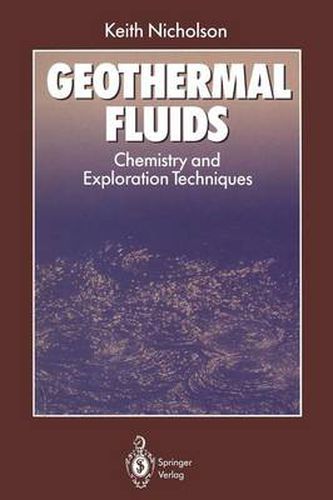Readings Newsletter
Become a Readings Member to make your shopping experience even easier.
Sign in or sign up for free!
You’re not far away from qualifying for FREE standard shipping within Australia
You’ve qualified for FREE standard shipping within Australia
The cart is loading…






This title is printed to order. This book may have been self-published. If so, we cannot guarantee the quality of the content. In the main most books will have gone through the editing process however some may not. We therefore suggest that you be aware of this before ordering this book. If in doubt check either the author or publisher’s details as we are unable to accept any returns unless they are faulty. Please contact us if you have any questions.
This book introduces aqueous geochemistry applied to geothermal systems. It is specifically designed for readers first entering into the world of geothermal energy from a variety of scientific and engineering backgrounds, and consequently is not intended to be the last word on geothermal chemistry. Instead it is intended to provide readers with sufficient background knowledge to permit them to subsequently understand more complex texts and scientific papers on geothermal energy. The book is structured into two parts. The first explains how geothermal fluids and their associated chemistry evolve, and shows how the chemistry of these fluids can be used to, deduce information about the resource. The second part concentrates on survey techniques explaining how these should be performed and the procedures which need to be adopted to ensure reliable sampling and analytical data are obtained. A geothermal system requires a heat source and a fluid which transfers the heat towards the surface. The fluid could be molten rock (magma) or water. This book concentrates on the chemistry of the water, or hydrothermal, systems. Consequently, magma-energy systems are not considered. Hot-dry rock (HDR) systems are similarly outside the scope of this text, principally because they contain no indigenous fluid for study. Both magma-energy and HDR systems have potential as energy sources but await technological developments before they can be exploited commercially. Geothermal systems based on water, however, are proven energy resources which have been successfully developed throughout the world.
$9.00 standard shipping within Australia
FREE standard shipping within Australia for orders over $100.00
Express & International shipping calculated at checkout
This title is printed to order. This book may have been self-published. If so, we cannot guarantee the quality of the content. In the main most books will have gone through the editing process however some may not. We therefore suggest that you be aware of this before ordering this book. If in doubt check either the author or publisher’s details as we are unable to accept any returns unless they are faulty. Please contact us if you have any questions.
This book introduces aqueous geochemistry applied to geothermal systems. It is specifically designed for readers first entering into the world of geothermal energy from a variety of scientific and engineering backgrounds, and consequently is not intended to be the last word on geothermal chemistry. Instead it is intended to provide readers with sufficient background knowledge to permit them to subsequently understand more complex texts and scientific papers on geothermal energy. The book is structured into two parts. The first explains how geothermal fluids and their associated chemistry evolve, and shows how the chemistry of these fluids can be used to, deduce information about the resource. The second part concentrates on survey techniques explaining how these should be performed and the procedures which need to be adopted to ensure reliable sampling and analytical data are obtained. A geothermal system requires a heat source and a fluid which transfers the heat towards the surface. The fluid could be molten rock (magma) or water. This book concentrates on the chemistry of the water, or hydrothermal, systems. Consequently, magma-energy systems are not considered. Hot-dry rock (HDR) systems are similarly outside the scope of this text, principally because they contain no indigenous fluid for study. Both magma-energy and HDR systems have potential as energy sources but await technological developments before they can be exploited commercially. Geothermal systems based on water, however, are proven energy resources which have been successfully developed throughout the world.